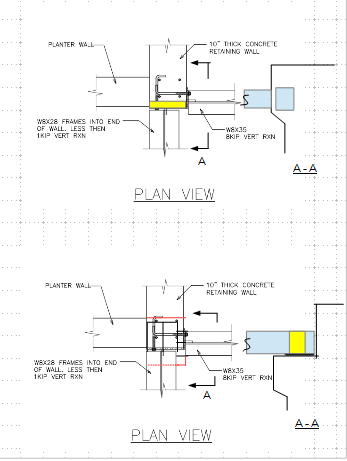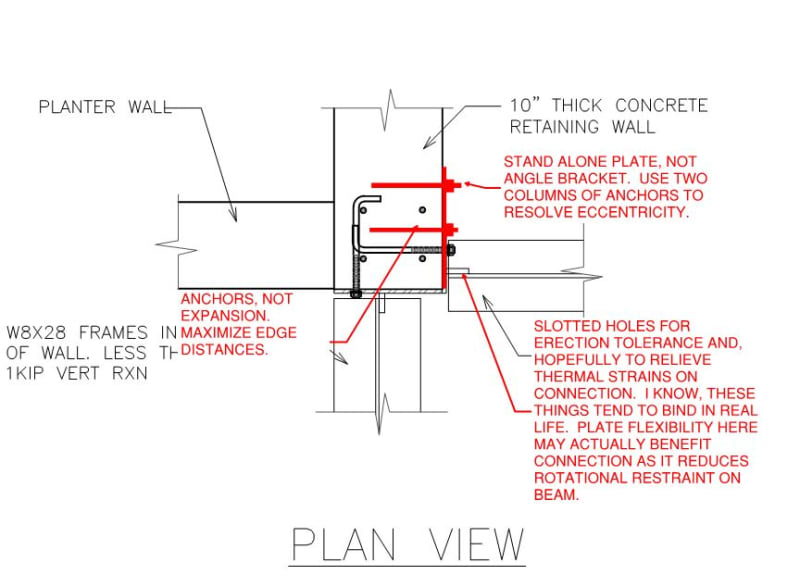shacked
Structural
- Aug 6, 2007
- 182
I am trying to detail a connection but I am having some trouble2nd thoughts due to the location.
See attached pdf for reference. Basically 2 steel beams at 90 degrees to each other both frame into the end of a concrete retaining wall.
The max vertical load is from the w8x35 that is oriented perpendicular to the face of the wall.
Due to the location of the bearing walls above the centerline of the w8x35 is approx 1 1/4" from the end/edge of the wall.
I realize that due to the eccentric load the top of the baseplate would want to pull away from the wall, but if both plates were welded together the the anchor bolts located at the end of the wall would resist the tension.
I would appreciate your thoughts. (This is a multi story residence)
See attached pdf for reference. Basically 2 steel beams at 90 degrees to each other both frame into the end of a concrete retaining wall.
The max vertical load is from the w8x35 that is oriented perpendicular to the face of the wall.
Due to the location of the bearing walls above the centerline of the w8x35 is approx 1 1/4" from the end/edge of the wall.
I realize that due to the eccentric load the top of the baseplate would want to pull away from the wall, but if both plates were welded together the the anchor bolts located at the end of the wall would resist the tension.
I would appreciate your thoughts. (This is a multi story residence)




